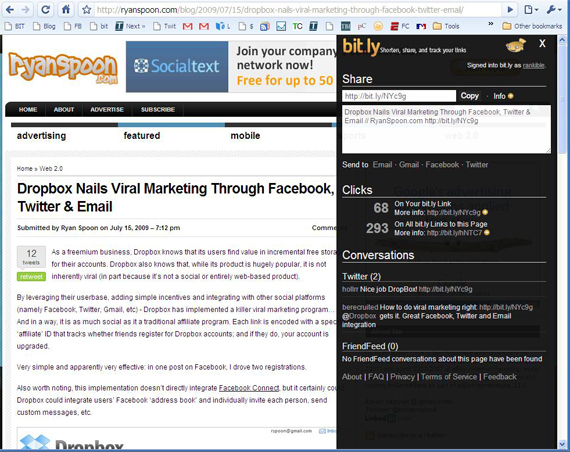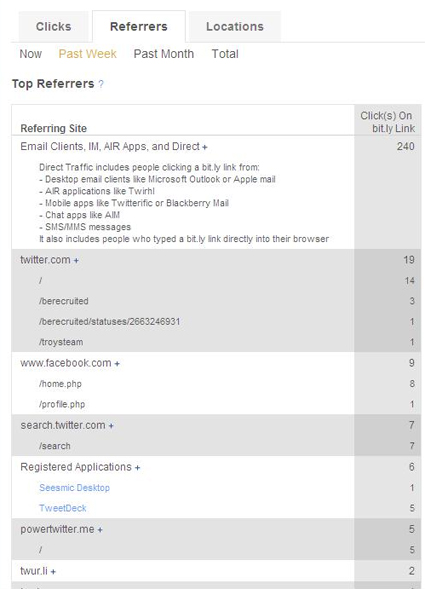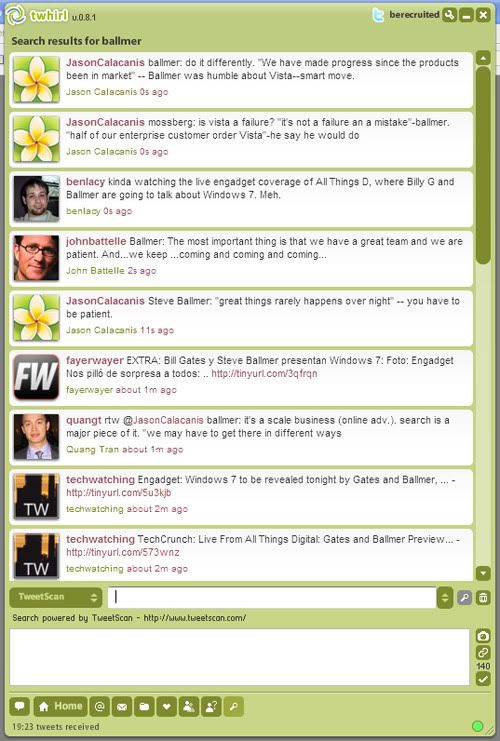Over a year ago, I wrote about the need for analytics for the real-time web (and the potential business model surrounding it): "Twitter and Friendfeed: Understanding Referral Traffic; Arriving at a Business Model".
Since then, the real-time web has exploded (thank you Facebook, Twitter, Google, etc)... and the need for deep data, filtering and search has only become more glaring (a notion made very clear in Twitter's internal documents and memos).
I have also written about Bitly and the role it can play in this ecosystem. Recently, I have started using Bitly's sidebar and data more actively (Clicks, Referrers, Locations and retweets). I love it. It's a glimpse of: - what discussions and posts are active and engaging - where the traffic and discussion is beginning (email, IM and desktop clients like Twitterific are primary drivers) - where the discussion is occurring (for the most active topics, it is more off my site than on it... fascinating) - Twitter's ecosystem (in the below example, Twitter.com accounts for only 6.5% of the direct clicks)







